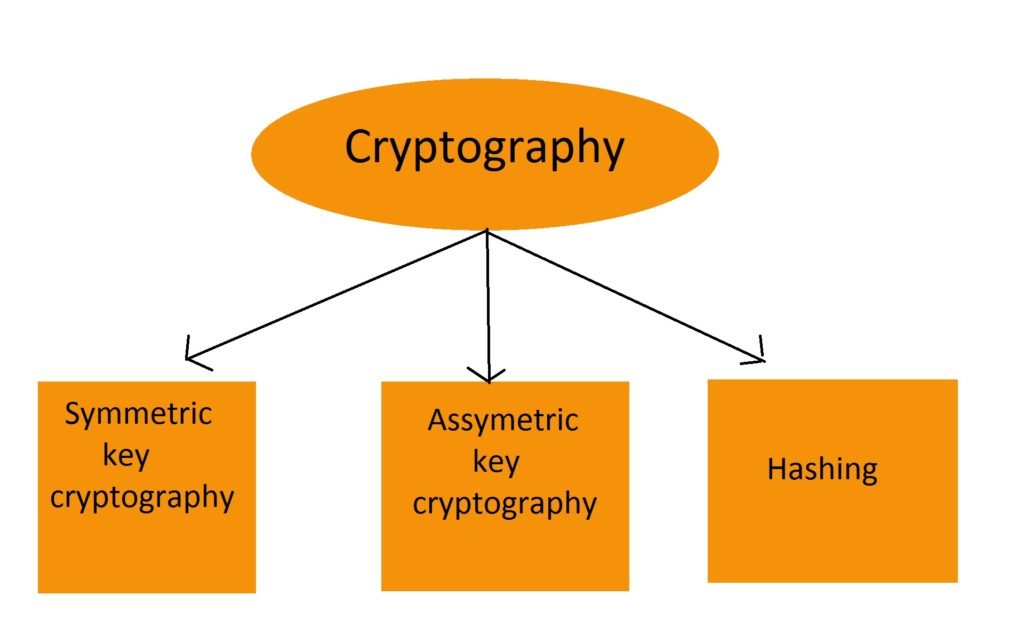In an age where digital interaction intertwines with everyday existence, the significance of cryptography transcends the ordinary. It serves as the bulwark protecting sensitive information against prying eyes and unwarranted access. Understanding the main branches of cryptography not only demystifies this complex discipline but also realigns our perspective on privacy and security. Below, we explore the primary domains within cryptography, each uniquely contributing to safeguarding communication and data.
1. Symmetric Cryptography
Symmetric cryptography, often regarded as the most fundamental form of encryption, utilizes the same key for both encryption and decryption processes. The hallmark of this branch is its efficiency, as it operates swiftly to secure data. When two parties wish to communicate, they must first share a secret key, an operation fraught with challenges, particularly in its transmission.
A quintessential example of symmetric cryptography is the Advanced Encryption Standard (AES). Renowned for its robustness, AES employs key sizes of 128, 192, or 256 bits, thus delivering a formidable defense against brute-force attacks. Yet, despite its advantages in speed and simplicity, the key management dilemma remains a hurdle, necessitating careful handling to prevent exploitation.
2. Asymmetric Cryptography
In stark contrast to its symmetric counterpart, asymmetric cryptography employs a pair of keys – a public key and a private key. The public key, as its name suggests, can be disseminated widely, allowing anyone to encrypt a message intended for the private key holder. Conversely, only the private key can decrypt these messages, ensuring confidentiality and authenticity.
Asymmetric algorithms, such as RSA (Rivest-Shamir-Adleman), leverage this dual key structure to facilitate secure communications over untrusted channels. The mathematics behind RSA hinges on the challenge of factoring large prime numbers, making it exceptionally resilient against attempts at decryption without knowledge of the private key. This form of cryptography fuels various applications, from establishing secure web sessions (https) to digital signatures that vouch for the authenticity of documents in a digital realm.
3. Hash Functions
Hash functions represent another critical pillar in the cryptographic landscape. Unlike encryption, hashing is a one-way function, taking input data and transforming it into a fixed-size string of characters, typically referred to as a hash value. The beauty of this process lies in its irreversible nature; small changes in the input produce drastically different hash outputs.
Cryptographic hash functions, such as SHA-256, are designed to withstand vulnerabilities like collision attacks, where two different inputs yield the same hash. These functions serve myriad purposes; they underpin the integrity verification of data, enhance password security, and form the backbone of blockchain technology. By summoning hash functions, individuals can ascertain that their information remains untampered, providing a foundation of trust in various digital interactions.
4. Digital Signatures
The concept of digital signatures elevates the principle of authentication within cryptography. By employing asymmetric cryptography, digital signatures create a virtual stamp of authenticity for digital messages or documents. The signer generates a unique hash of the data and encrypts it with their private key, producing a signature that can be verified by anyone possessing the corresponding public key.
This mechanism affirms the integrity of the signed content and ensures non-repudiation, meaning the signer cannot later deny having signed it. Digital signatures are crucial in electronic transactions, legal agreements, and software distribution, providing a layer of authenticity that bolsters trust in digital interactions.
5. Key Management
While the branches of cryptography are critical for securing information, the efficacy of these techniques heavily relies on the management of cryptographic keys. Key management encompasses the creation, distribution, storage, and eventual destruction of keys. Mismanagement can lead to vulnerabilities that compromise an entire cryptographic system.
Organizations often implement key management systems (KMS) to automate these processes, ensuring that keys are rotated regularly and access controlled meticulously. As we navigate a landscape punctuated by evolving threats, mastering key management emerges as a paramount skill for maintaining security in any cryptographic framework.
6. Cryptographic Protocols
Cryptographic protocols are the rules that govern how cryptographic techniques are implemented to ensure secure communication and data exchange. These protocols define the sequence of operations that parties must follow to achieve security objectives, such as confidentiality, integrity, and authentication.
Protocols like SSL/TLS (Secure Sockets Layer/Transport Layer Security) are indispensable in securing internet communications. They utilize a combination of symmetric and asymmetric cryptography to establish secure connections, protecting data as it traverses potentially hostile environments. Understanding these protocols can empower individuals and organizations to navigate the digital world safely.
7. Post-Quantum Cryptography
As the digital landscape evolves, so do the threats against it. Enter post-quantum cryptography, an emerging field responding to the potential risks posed by quantum computing. With the ability to solve certain mathematical problems at a speed unprecedented by classical computers, quantum systems threaten to dismantle current cryptographic practices, particularly those reliant on factoring large numbers or solving discrete logarithms.
Research in post-quantum cryptography focuses on developing algorithms that – even in the presence of quantum computing capabilities – remain secure. This forward-thinking approach promises a renewed shield for our digital information as we stand on the cusp of a quantum computing era.
Understanding the branches of cryptography heralds a shift in perspective, from mere users of digital technology to informed participants in the digital age. As each layer unfolds, a tapestry of security emerges, capable of protecting our most sensitive data against increasingly sophisticated threats. Embracing these principles not only piques curiosity but empowers individuals to navigate the complexities of the modern digital landscape with confidence.








Leave a Comment